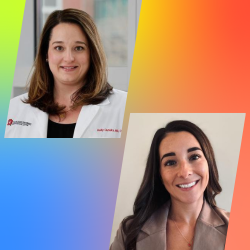In a recent three-year period, more than 40% of active principal investigators (PIs) in the United States conducted just one industry-sponsored pharmaceutical clinical trial, the authors of a forthcoming article for ACRP’s Clinical Researcher journal discovered through an in-depth analysis of federally mandated reports on payments for such research projects. In all, 80% of the nearly 37,600 PIs who were active in drug studies for some period within the 2018, 2019, and 2020 timeframe ran just one to five trials with industry funding in that three-year block.
“Estimates about the size and composition of the PI pool in the U.S vary widely and are often based upon rather opaque sources,” said Harold E. Glass, MSc, PhD, cofounder of SunshineMD, a site selection consultancy firm in Philadelphia, Pa., and lead author of the article due to appear in the December 2022 issue of Clinical Researcher. “The federal Sunshine Act mandates the public reporting requirements for all pharmaceutical and medical device companies regarding their payments to U.S. physicians and other medical professionals. This includes separately indicated payments for industry-sponsored clinical research.”
According to Glass, who is also a retired professor at the University of the Sciences in Philadelphia, the database used to capture and report these data, Open Payments, requires extensive user coding and cleaning. However, when the effort was made, he and his coauthor, Andy Guy, MBA, another cofounder of SunshineMD, found that the largest 20 pharmaceutical companies (by spending) account for nearly three-quarters of all payment value, and that the actual number of U.S. PIs conducting one or more pharmaceutical trials has remained strikingly consistent across the industry in recent years—at 28,292 in 2014, the first year of full reporting for the database, and at 26,115 in 2020.
From 2018 to 2020, the number of active clinical investigators (including those conducting medical device studies) was 45,554, with 83% of them having worked on pharmaceutical clinical trials.
“Most investigators during the three-year period we examined most closely have little clinical trial experience,” Glass explained. “However, it is worth noting that some of these investigators may have conducted studies for other types of organizations not captured in the Open Payments database, such as the National Institutes of Health. Still, a small number of investigators account for a very large portion of all the clinical trial activity.”
There is a valuable distinction to be made between PIs who performed one study during this time period and the set of so-called “one and done investigators,” Glass added, in that one and done investigators never do a second study.
“There could be a variety of reasons these investigators decide that they do not want to do a second study, including such considerations as the unanticipated increased administrative burden, the unexpected demands on professional staff, the added cash flow challenges, and a possible desire to focus on non-commercially funded studies,” Glass said.
Glass and Guy found that the actual percentage of one and done U.S. investigators participating in clinical research for the pharmaceutical industry is 20.3%. That is, in any given year about one-fifth of active investigators will only ever do one industry-sponsored drug trial. The authors also report on site-level activity for such studies in the U.S. in their full article, scheduled to appear online December 20.
Edited by Gary Cramer



